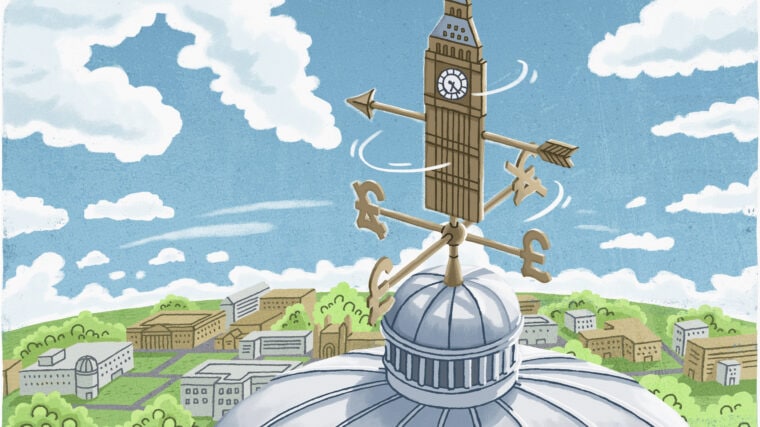Some people are powerful because they understand the sector as it is, others draw power from an idea of how the sector should – or shouldn’t – be. The tensions between the realists and the idealists drive much of the excitement in higher education policy which, amongst other things, makes Wonkhe such a good read.
Two extreme examples of this – Paul Clark (40th) at HESA, by virtue of his mastery of sector statistics, probably has a more accurate view of what is going on than anyone else on the list. In contrast, someone like Andrew Adonis (21st) sits largely outside the sector and reflects the slanted opinions of others aligned to his campaign. Given the choice, I’d spend a morning listening to Paul Clark – but if you compare the amount of impact on the national debate each has had it would be a clear win for the noble Lord.
Somewhere in the middle of this spectrum we find our vice chancellors. Clearly they have a robust connection with the reality of running a large and complex organisation, someone as good as Mary Stuart (29th) will be wired into an institutional nervous system that gives her an accurate grasp of everything from financial forecasts to staff morale. But she also has a responsibility to present Lincoln in a good light – is what she says in public the same as the internal narrative?
And so where do we place the politicians? Jo Johnson (7th), with a talented advisor like Stian Westlake (19th), is clearly working in an information-rich environment. But Johnson’s power comes from his ability to act based on his ideas of what the sector should be – and in this instance he will make claims (“lamentable teaching”, for instance) that are at least empirically questionable. The cleverer policy maker will not make claims that are contradicted by hard data – witness Jeremy Corbyn (joint 10th) and Angela Rayner (33rd) continuing to claim that disadvantaged students are dissuaded by high fees. The data points in the opposite direction.
Journalists and commentators will take elements of each approach to create a compelling narrative. Clearly with a writer like Anna Fazackerley (44th) we can rely on the accuracy of her writing, but she also has a story she wants to tell. This gets doubly complicated with her “2VCs” series, as she’s dealing with two other storytellers, each of whom have their own ideas around spin and presentation.
Reading the OfS
But where it gets really fascinating is at the top of the table. We see a completely new sector regulatory team, in two new organisations, represented in three of the top four slots. We know – I think – how to “read” HEFCE by this point, but what will the tenor of communications from Nicola Dandridge (4th) and Michael Barber (1st) be? How do we “read” OfS?
Both, and indeed Mark Walport (2nd), are no strangers to the sector. But we are very likely to see a change in public character with a new role – witness the difference between Dandridge’s sporadic tweets as UUK Chief Executive and her already far more active approach to social media at OfS. Barber, too, is seared in the memory of many followers of UK politics with his dry, technocratic, data-driven presentations as Tony Blair’s support act. But his first public statement as OfS chair highlighted his love of – of all things – landscape photography and modernist poetry.
Over at Universities UK, Dandridge’s successor as CEO is Alistair Jarvis (9th) and he scores highly on the 2017 list for good reason. Jarvis has come to the top job by rising through communications and external relations roles in the sector. It’s surely no accident that he’s been chosen to lead the sector’s biggest representative body at a time when narratives about universities in the media and in politics are being too-often shaped by the sector’s critics.
All too often, wonks will focus on the minutiae of public statements without taking into account their overall atmosphere or context. It’s fine when diving into data tables, but perhaps there is more attention that could profitably be paid to understanding strategic communications planning. Because a proper communications strategy is not merely reactive – it is intimately bound to a wider narrative that an individual or organisation wants to promote.
Inconvenient facts, and changes in the public mood, will be incorporated into an evolving tapestry – much like unexpected dissonances will inform and improve an instrumental solo in jazz.
The current environment is characterised by a degree of panic and tension – moods that reinforce the need to control and respond to external stimuli. But the best of the 2017 list are skilled in making their own weather, and in getting others to believe in it.
See the full 2017 HE Power List on Wonkhe













